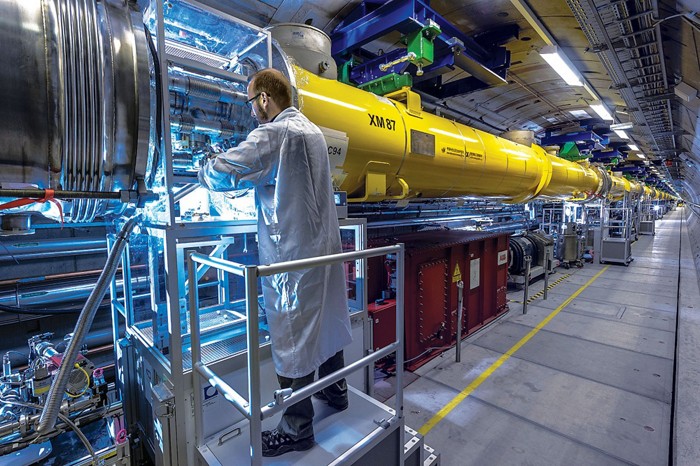- Details
-
Friday, 17 August 2018
The European X-ray Free-Electron Laser recently came on-line as the biggest and brightest source of X-rays on planet Earth. Those brilliant X-ray beams will allow chemists to do groundbreaking research on enzymes, solar-cell materials, and more.
But with great science comes great responsibility. In our latest Stereo Chemistry podcast, C&EN contributing editor Mark Peplow visits the X-ray facility to learn about its growing pains, its staff’s unique approach to keeping beamlines running, and some of the facility’s early successes. Listen to the full episode at cenm.ag/xfelpod.
The following is a transcript of this podcast.
Matt Davenport: It’s one of the most fundamental questions a chemist can ask: how are the atoms arranged inside… stuff? The answer not only tells you about the chemical structure of a material–it can reveal why it has certain electrical or magnetic properties, for example. Or why it’s so good at getting involved in a particular reaction. And one of the best ways to figure out that structure relies on X-rays.
In this episode of Stereo Chemistry, we’re going to take you inside the biggest and brightest source of X-rays on planet Earth – an X-ray free electron laser — and we’ll hear about the amazing science that people are doing with it. But first, a little history.
So just over a century ago, physicists realized that when they fired X-ray light through a crystal, those X-rays would scatter off the crystal’s atoms to form a unique pattern. Not to William Lawrence Bragg, but the physicists had also set up a film to record that scattered light. What developed for each crystal was a unique pattern of bright spots and dark regions. That pattern is a fingerprint that tells scientists precisely how the atoms are arranged.
Fast forward to the 1970s, researchers got their hands on a new and more powerful source of X-rays called synchrotrons. These particle accelerators make electrons go so fast that they spit out bursts of X-rays. And these bursts have been used to determine the structures of tens of thousands of different proteins, for example. But synchrotron X-ray bursts are still not bright enough to get structures from nano-sized crystals, or things that simply refuse to crystallize at all.
That’s where X-ray free electron lasers come in. And just some record-keeping up front: X-ray free electron laser is abbreviated X-F-E-L or “X-fell.” And that’s not to be confused with the short-lived XFL American football league, which, for some reason, is apparently coming back in 2020. But that’s for another episode.
At any rate, XFELs work on a similar principle to synchrotrons, but they make pulses of X-rays that are a billion times brighter, so you can get chemical structures that you just wouldn’t be able to see using any other X-ray sources. Over the past decade, several billion-dollar XFEL facilities have been built around the world.
The newest one is called the European X-ray Free Electron Laser, and it can produce the brightest X-ray pulses yet. Researchers started bringing their samples there in September of last year, but it’s had its fair share of teething problems. So we sent C&EN contributing editor Mark Peplow there last month to find out how its all going. Welcome to Stereo Chemistry, Mark.
Link to full article→






